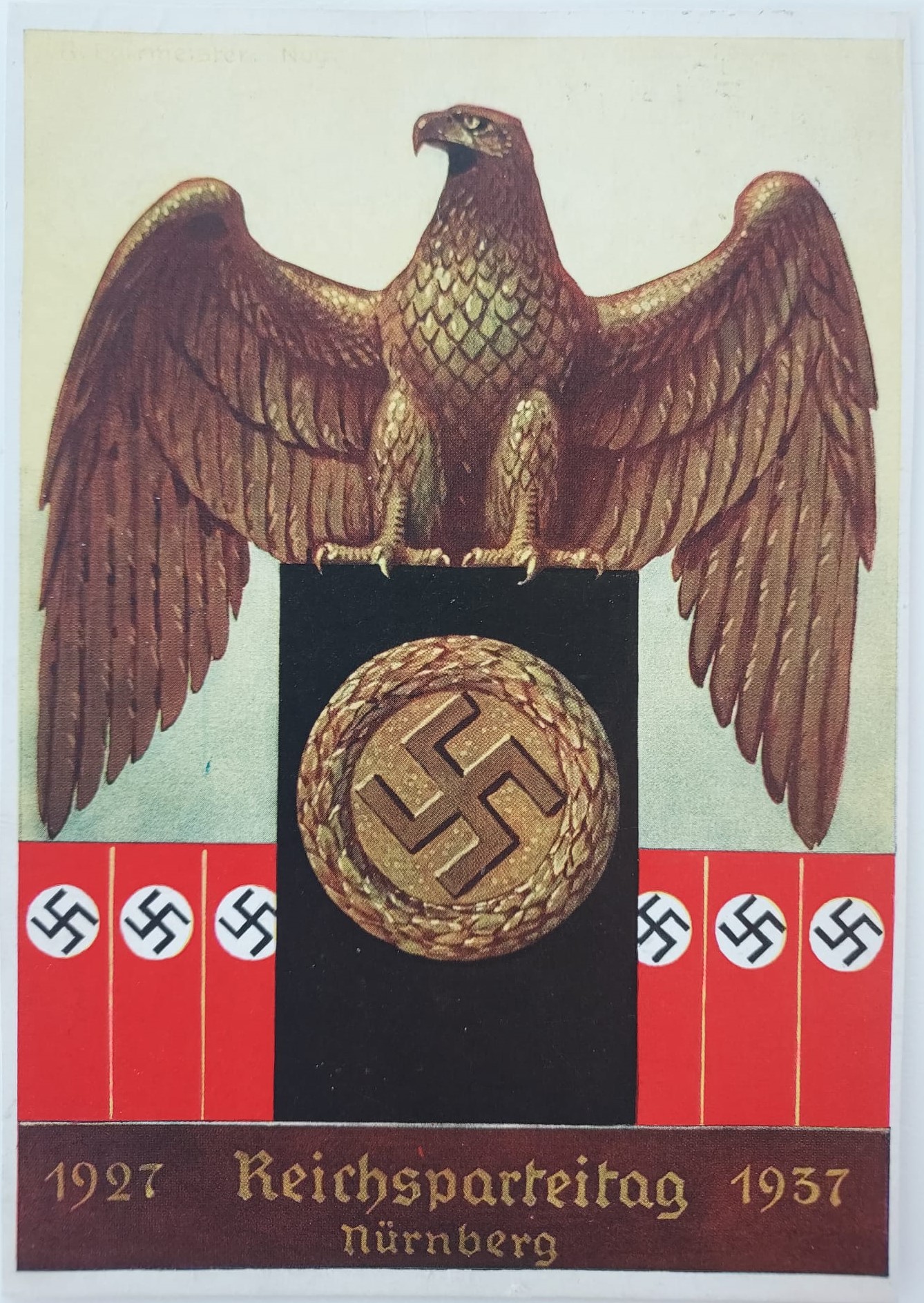Accession Number: 2022.10.5.63
Stamp: 1936 Otto von Bismarck, Deutsches Reich, 6 Pfennig (dark green)
Postmark:
Nürnberg, Stadt der Reichsparteitage
Nuremberg, city of the Nuremberg Rallies
11 September, 1937
Historical background:
The Nuremberg Rallies were a series of celebratory rallies hosted by the Nazi party. The first rally was held in 1923 to little affect. Once Hitler gained power in 1933, the rallies became elaborate nationalized events, drawing considerable crowds. The 1937 Nuremberg Rally was labor themed, intended to highlight the reduction in German unemployment under the Nazi party. It was known as The 9th Party Congress Rally of Labor, and was held September 6th-13th.
The note written on this postcard describes one scheduled day in the life of a Nazi woman named Grete in 1937. She writes that her brother cannot visit her on Monday, because she is busy with NSV Congress and has a ceremony to attend for Wehrmacht (the name given to Nazi Germany’s combined armed forces).
NSV stands for Nationalsozialistische Volkswohlfahrt (National Socialist People’s Welfare), a social welfare organization. In 1933, the NSV became the singular provider of social welfare services after Hitler disbanded all private welfare institutions. Jews, non-Germans, opponents of the Nazi regime, and other “racially inferior” persons were excluded from receiving services from the NSV. Such services was heavy encouraged for women by organizations such as the DFW (Deutsches Frauenwerk / German Women’s Service Association) (Stephenson, 1982).
Since the postcard is postmarked September 11th, 1937 out of Nuremberg, it is likely that Grete’s NSV Congress and Wehrmacht ceremony were events being held as part of the 1937 Nuremberg Rally.
References
Stephenson, J. (1982). Middle-class Women and National Socialist “Service.” History, 67(219), 32–44.


